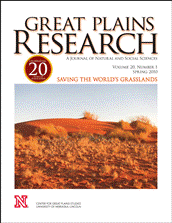Great Plains Studies, Center for

Great Plains Research: A Journal of Natural and Social Sciences (through 2013)
Date of this Version
August 1992
Document Type
Article
Abstract
In Native American history, no event is more pregnant with symbolism than the confrontation which occurred four days after Christmas in a remote part ofwestern South Dakota. American Indians have since referred to it as the Massacre at Wounded Knee where more than 250 men, women and children were wantonly killed by vengeance-seeking troops of the 7th Cavalry. Other commentators, especially white observers of 1890, called it the Last Battle of the Indian Wars, implying that two armies met in one final conflict to decide the fate ofthe Northern Plains. Today, most scholars follow the interpretations of Robert Utley's masterful The Last Days of the Sioux Nation (1963), which stresses cultural misunderstandings and rampant fears as the real sparks that ignited this senseless tragedy.


Comments
Published in Great Plains Research 2:2 (August 1992), pp. 309-310. Copyright © 1992 The Center for Great Plains Studies, University of Nebraska-Lincoln. Used by permission. http://www.unl.edu/plains/publications/GPR/gpr.shtml